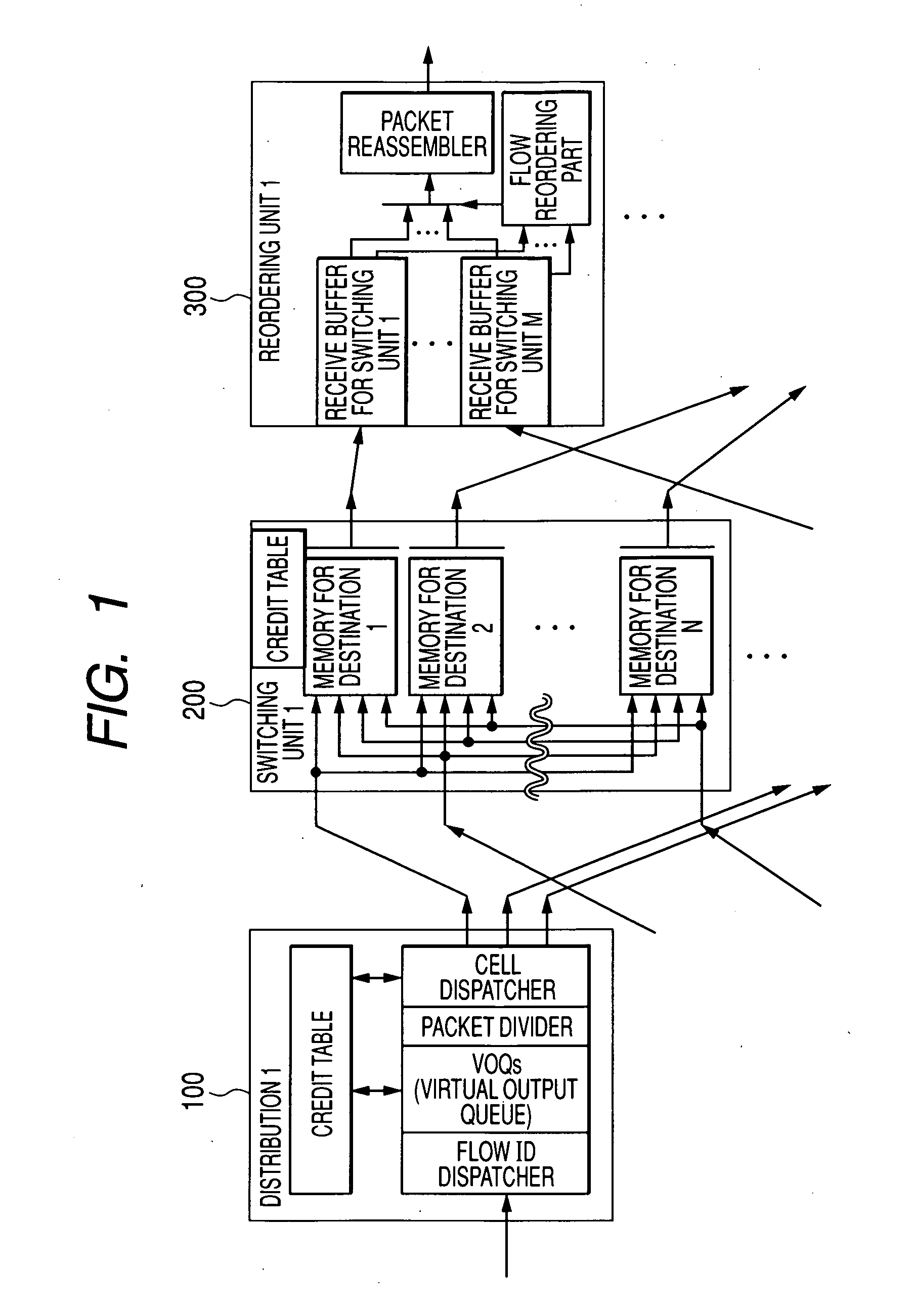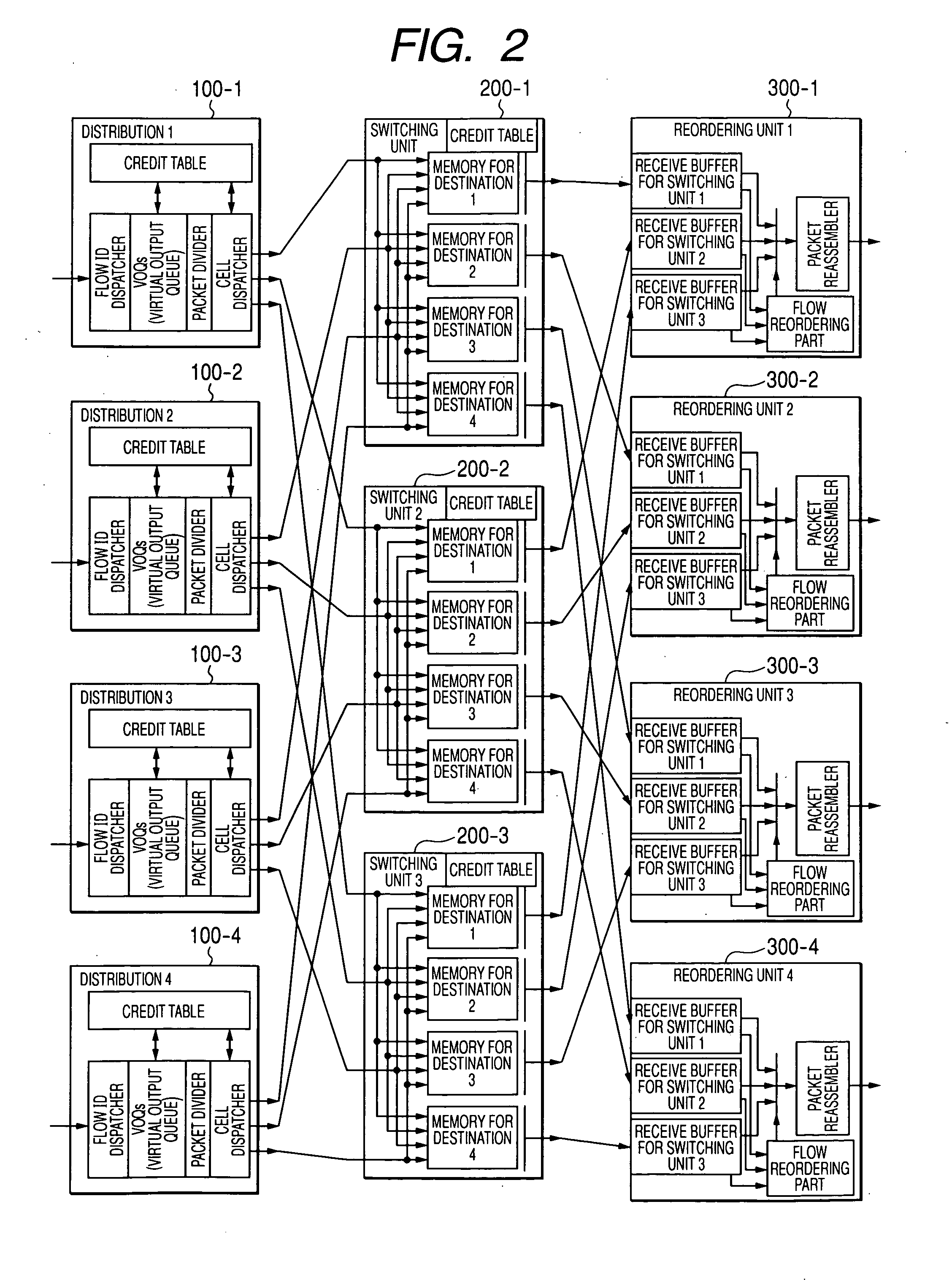Multi-plane cell switch fabric system
a switch fabric and multi-plane technology, applied in the field of multi-plane cell switch fabric system, can solve problems such as lowering the switching capacity, and achieve the effects of low switching capacity, high switching capacity, and cost reduction
- Summary
- Abstract
- Description
- Claims
- Application Information
AI Technical Summary
Benefits of technology
Problems solved by technology
Method used
Image
Examples
first embodiment
[0040]FIG. 1 shows a configuration of a multi-plane cell switch fabric system in an embodiment of the present invention. The multi-plane cell switch fabric system includes “N” distribution units 100, each of which functions as an input, “M” switching units 200 used for switching data respectively, and “N” reordering units 300, each of which functions as an output. Note that, however, FIG. 1 shows only part of the multi-plane cell switch fabric system so as to simplify the configuration; the number of input / output units, as well as the number of switching units can be decided freely. For example, FIG. 2 shows another configuration of the entire multi-plane cell switch fabric system that includes 4 input / output units and 3 switching units. In other words, the multi-plane cell switch fabric system is composed of 4 distribution units 100-[1 to 4], 3 switching units 200-[1 to 3], and 4 reordering units 300-[1 to 4].
[0041]At first, how each unit of the switch fabric system will function w...
second embodiment
[0111]Next, there will be described a second embodiment of a multi-plane cell switch fabric system including a reordering unit capable of restoring each flow in a shorter time than the reordering unit in the first embodiment. The configurations of the distribution unit 100 and the switching unit 200 in this second embodiment are the same as those described with reference to FIG. 1, etc. in the first embodiment. As for the configuration of the reordering unit, there is only a difference between this second embodiment and the first embodiment; a flow reordering part is provided in the reordering unit in this second embodiment. Therefore, there will be described the configuration and operation of only the flow reordering part 330′ in detail in this second embodiment.
[0112]The flow reordering part 330′ in this second embodiment, as shown in FIG. 15, includes a sequence number management memory 332, a sequence number comparator 333, a receive-buffer-read queue 335, a retry queue 336, a c...
PUM
 Login to View More
Login to View More Abstract
Description
Claims
Application Information
 Login to View More
Login to View More - R&D
- Intellectual Property
- Life Sciences
- Materials
- Tech Scout
- Unparalleled Data Quality
- Higher Quality Content
- 60% Fewer Hallucinations
Browse by: Latest US Patents, China's latest patents, Technical Efficacy Thesaurus, Application Domain, Technology Topic, Popular Technical Reports.
© 2025 PatSnap. All rights reserved.Legal|Privacy policy|Modern Slavery Act Transparency Statement|Sitemap|About US| Contact US: help@patsnap.com



